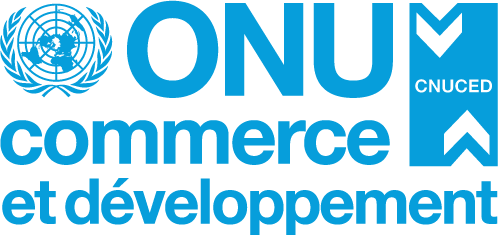UNCTAD outlines new productive sectors for economic diversification
The new report is aimed at helping countries harness technology and innovation for faster and more inclusive and sustainable economic growth.

© Shutterstock/Suwin | An engineer uses computer automation programmes to control a robotic hand in a smart factory.
UNCTAD has released a catalogue that, for the first time, identifies over 45,000 potential new products with export potential that can help diversify 233 economies.
The catalogue is aimed at informing governments, the private sector and other stakeholders who make up national innovation systems about possible product areas where technology can be used to diversify economies for structural transformation.
“The ability to identify new industries with potential could greatly help innovation and industrial policies,” said Shamika N. Sirimanne, director of UNCTAD’s technology and logistics division.
“This handy catalogue identifies such industries based on a country’s productive structure and level of development, and the demand for these products in the global market,” Ms. Sirimanne added.
From low- to higher-value products
Economic diversification is an essential feature of development. The more developed a country is, the more diversified its economy is likely to be, and the higher its technological level. Economic diversification is ultimately the result of innovation.
Research shows that structural transformation – the process whereby a sustained period of rising income and living standards coincides with changes in the distribution of economic activity – increases economic growth and competitiveness, moving jobs from low- to high-value-added products.
In other words, a country needs to be able to produce not only new products but also those that are more sophisticated, using higher skilled labour and more advanced technological applications.
This requires the diversification of economic activity towards more complex products. And development policies should be designed to facilitate this process.
Achieving this requires the selective promotion of new economic activities through targeted industrial, technology and innovation policies. To do this, policymakers should identify and target appropriate sectors and products, based on the productive structure of each country and changes in global demand.
The catalogue uses indices based on the economic complexity of a country to estimate the level of technology that goes into manufacturing different products, and aggregates information on the level of diversification and exports.
More complex products require higher levels of technology.
The index of product complexity is based on information about the bilateral trade of 233 economies, including small islands and territories, in over 45,000 product lines differentiated by unit price ranges.
Supporting transformative policies
The list of products serves as a basis for an inclusive process of identifying, evaluating and selecting economic activities for export diversification, and allows for strategic government interventions for the formulation of industrial strategies.
For example, in Angola the top three sectors in terms of potential for export diversification are mechanical appliances, pharmaceutical products and plastics.
Since the production of plastics is closely linked to oil production and given Angola’s position as the second-largest oil producer in Africa, this possibility for economic diversification is clearly linked to the country’s endowments.
The catalogue presents information on four main areas:
- Basic statistics on diversification.
- Potential new sectors for diversification covering all products, and the markets that offer growing export opportunities.
- Potential new sectors for diversification covering only agribusiness products and the markets that offer growing export opportunities.
- Examples of potential new products with higher export opportunities.
In addition to accessing the full catalogue, users can download fact sheets corresponding to individual economies from the UNCTAD website, and the full dataset of possible new exports.


